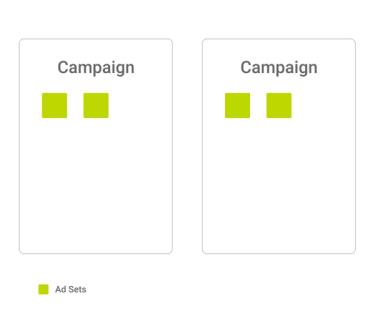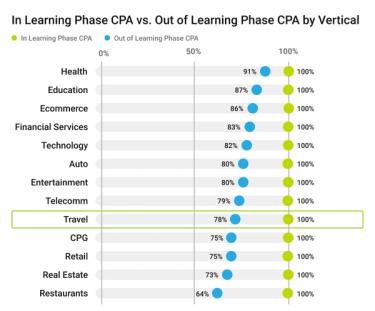The Facebook Auction - How to Structure for Success
Creating and optimising campaigns in Facebook Ads has historically been a bit of a headache. With its clunky interface, constantly evolving features, and near-inscrutable set of reporting metrics, it is (to put it politely) often not your average digital marketer’s preferred ad platform.
These problems aside, there’s then the issue of Facebook’s Ad Auction, which requires you to trust that Facebook’s algorithms are going to spend your budgets in the most effective way possible. How it works has (for a long time) been somewhat opaque, but Facebook has recently started to release more information behind how the system works in an effort to help marketers better use their platform. In this article we’ll help demystify the Facebook Ad Auction, and give tips on how you can structure your Facebook campaigns in a way that works with the algorithms, rather than against them.
It summary it boils down to: 1) Simplify your structure and 2) Respect the learning phase
Simplify your structure
A fairly typical Facebook account structure can often look something like this - with multiple campaigns organised into different marketing approaches, strategies, or tactics. These campaigns will then be subdivided by highly-defined, narrow audiences at ad set level.

But, what if things were a lot simpler and your account structure could look like this?

While it may seem counterintuitive to significantly reduce the size of your account, Facebook claims that a simplified and consolidated structure leads to what they call increased ‘auction signal’, i.e. it increases the available signals Facebook’s algorithm has to work with when it decides where and how to deploy budget.
Combining your campaigns and ad sets into larger buckets helps because it’ll remove constraints on the system so that it can search for the best areas of opportunity within larger groups of people instead of being restricted to granular, pre-defined audiences. The primary benefit of a consolidated account structure, however, is that it will help drive a faster exit from Facebook’s learning phase because the algorithm has more information to work with. Why is this significant? Well...
Respect the learning phase
Facebook’s learning phase is the period of time that the delivery system explores the best way to deliver your ad sets after launch. This means that performance is less stable, and CPAs will actually be worse during this time because the engine is still working out the best people and places to show the ad. Anything that you can do to exit the learning phase earlier will therefore help to improve overall campaign performance. The effect will also differ by sector, as illustrated by Facebook’s own data:

Fortunately there are some straightforward rules you can follow to make sure your campaigns have enough data to exit the learning phase in a timely manner. For instance, making sure that your targeting and placements aren’t too narrow will really help give the auction more signal.
It’s also very important that you optimise for the right conversion event. If you’re optimising for a conversion event which is too far along the funnel for you to reach the sufficient number of conversions, then try switching to something which will record more conversions - for example, optimising for ‘Add to Carts’ instead of ‘Purchases’. A higher number of conversion events will ultimately help you get past the learning phase threshold and improve overall optimisation.
One last critical piece of advice: Do your best to avoid frequent manual edits! Whilst it may be tempting to constantly tune and tweak your campaigns, making significant changes can reset the learning phase so that the algorithm has to start all over again. Any changes to the following can cause your campaigns to re-enter the learning phase:
- Targeting
- Placements
- Creative (including adding additional ads)
- Optimisation events
- Pausing your ad set for more than 7 days
- Bid strategy
- Budgets
Key takeaways
- Consolidate your account structure where possible for maximum auction signal
- Give the the Facebook system as many data points as possible so that it can exit the learning phase quickly
- Don’t narrow your targeting too much, and optimise for the right conversion events to reach the learning phase threshold
- Do your best to avoid frequent manual edits so that your campaigns don’t re-enter the learning phase
Find out more information about our digital marketing services.
Let's chat. Tell us a bit about your project.
If you prefer to speak with someone, call 01202 203160 or if you'd like to book a 30 min meeting to see if we can help just let us know and we'll arrange a call with one of our Directors.